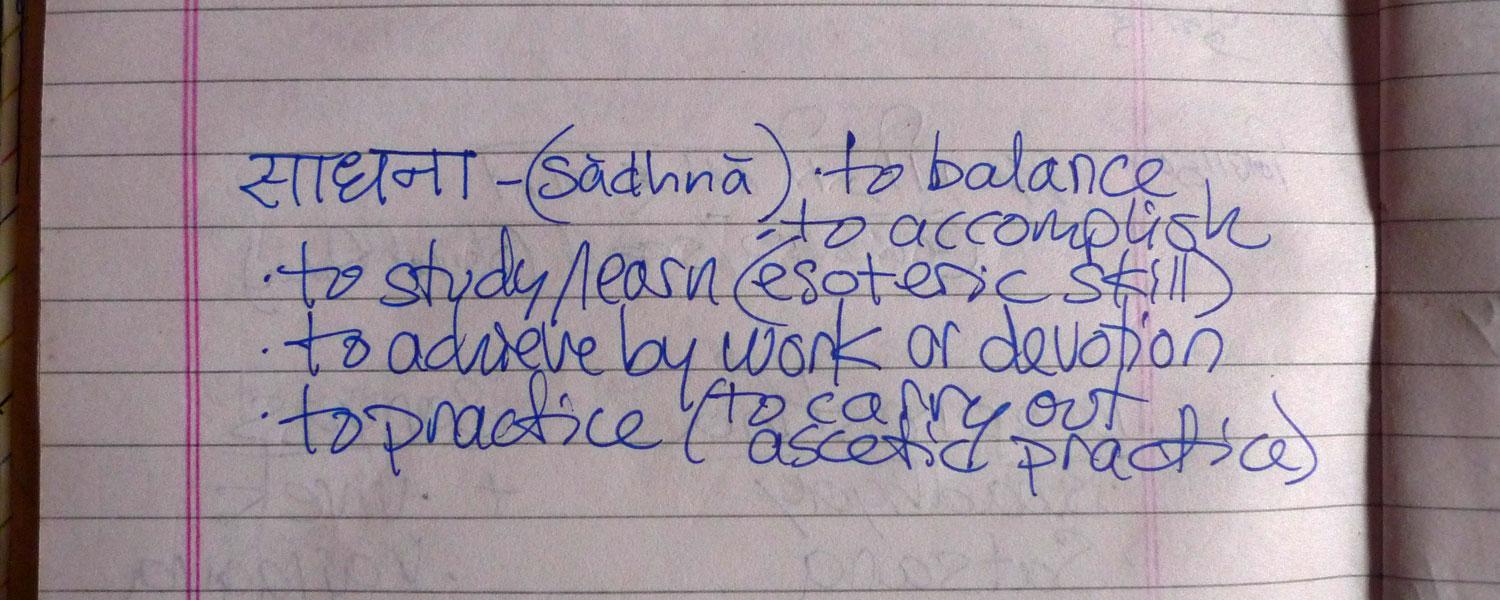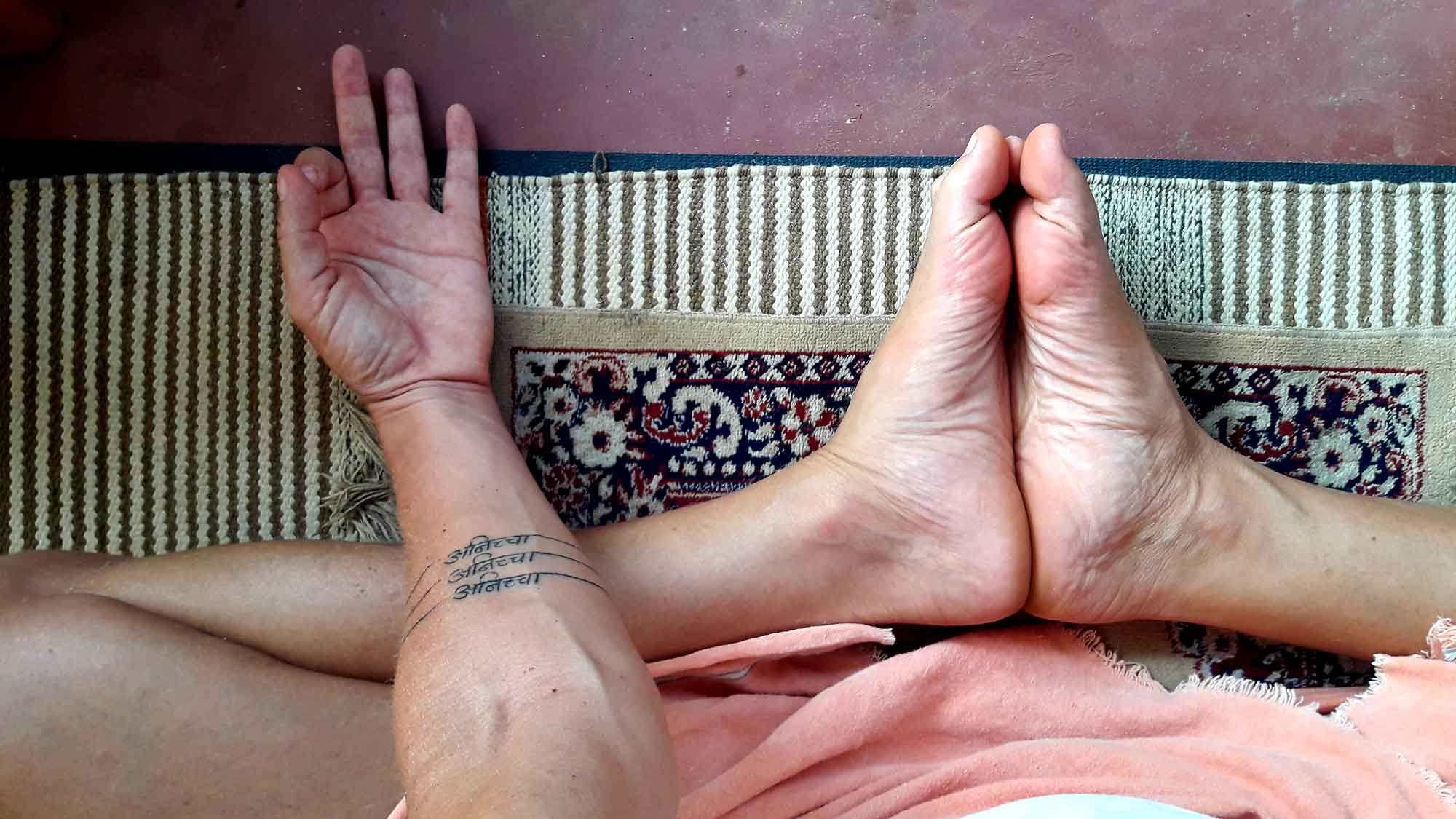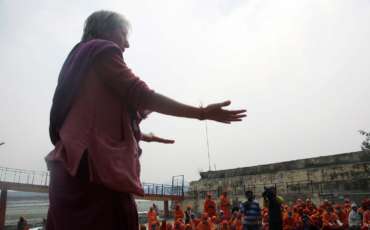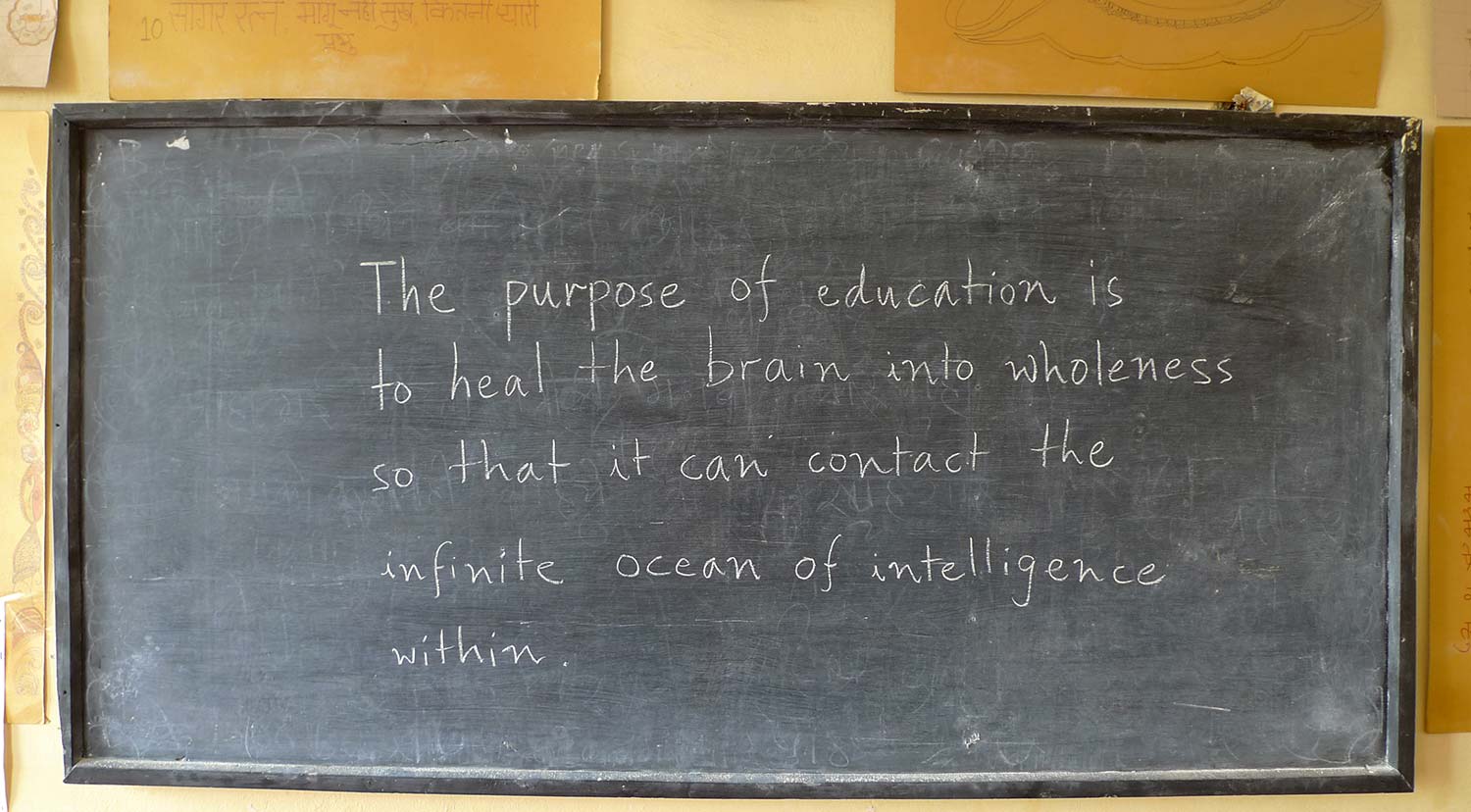While Honoring the Roots of Yoga, the wisdom traditions of the Indian Himalayas, Sādhana Guidance with Nicole will help you bring traditional hatha yoga, meditation and Ayurveda into your daily life, without compromising your involvement in the world.
I teach traditional Hatha Yoga
Saptasadhana (seven limbed sadhana): Śatkarma, Āsana, Mudra, Pratyahara, Prāṇayama, Dhyān and Samādhi in the traditions of Adiyogi Shiva, Nath Yogi Swatmarama, Rishi Gheranda and the sanyasi yogis of Juna Akhara. I also sometimes incorporate mindfulness, Vipassana (breath and sensation awareness), Yoga Nidra and Swara Yoga (the later especially when queering yoga becomes an opportunity). My focus is mostly on cultivating stillness as opposed to the vinyasa flow classes typically found in the States.
My practice and teaching style
is both trauma informed, as well as queer affirming, recognising the actual truth of Sanatan Dharam (often loosely translated as eternal truth), is that we are indeed genderless souls covered in a gendered body (container).
I also occasionally teach philosophy and have given satsangs and public discourses about karma yoga in ashram life, as well as queering yoga in reference to Ardhanarishwar and Swara Yoga.
I have been drafting curricula with three main themes:
The Yogic Office (#theyogicoffice), Digital Minimalism for the Modern Yogi, Self Regulation Technologies, and Queering Yoga – with goals for running my own transformational retreats in the Himalayas.
I prefer to teach in person than online.
However while tourism in India was shut down for two years during the pandemic, I have assisted the rest of our staff to teach via Zoom and have upgraded our ashram website to include online (Teachable style) classes, mostly an archive of previously recorded in person classes.
I occasionally teach asana and pranayam online via
Yogama.berlinOn the surface I may seem like just another white yoga teacher. But trust me I have done the work.
I don’t just have over 1000 hours of teacher training certificates in my file; I’ve got over 150 months in seven trips in India under my belt (2000-2001, 2002, 2004, 2007, 2010-2016, 2017-2018, 2019-and counting), studying, practicing and living among ascetic yogis and others serious about their sādhana.
I’ve been coming to India since 2000, mostly to attend the Kumbh Melas. Frustrated with the yoga I was seeing in American yoga studios compared to what I experienced among the yogis I met at these melas, I was determined to learn from as close to source as I could.
So I shifted here in 2010, avoiding tourist spots and living mostly in non-english speaking ashrams in small towns and remote rural Himalayan villages. My immersion and study resulted into being now fluent in Hindi, after which I began studying Sanskrit for several years with an 84 year old Sanyasi (whose English is below minimal). I read / write and can even type in Devanagari. I have studied original Sanskrit texts (beyond Patanjali Yog Sastra) with both English and Hindi commentaries by Indian authors. Most of my sadhana was learned via Sanayasi yogis, several vipassana centers and unmarried householder meditation teachers, outside of the teacher training scope (however I have also accumulated over 1000 hours of certificate courses – yet refuse to register for yoga alliance). For the past few years I’ve also been studying with and now assist an ayurvedic doctor with her classes. When I shifted in 2014 to an ashram that catered towards videshi yoga retreats, being bilingual and with my experience, aside from creating the certificate course manuals and tour guiding / translating for our guests, I often got sent to be the one to foreign-explain when one of them did something culturally inappropriate.
In 2016-2017 I returned to the States. I got turned away from yoga studios, when I pitched classes that focused on asanas to cultivate stillness (preparing for meditation) rather than flowy movement. I got casually blown off when I gently offered feedback to studio owners about their cultural appropriation. I got turned away by online publications with my “un-relatable” essays about the appropriation I was witnessing in American yoga studios. It was indeed discouraging.
I could be a bridge….
between what I have been taught by traditional Himalayan Yogis and what is being taught within the Spiritual Industrial Complex that has become of the commercial yoga industry.
So I’m asking you, are you ready for this? Are you ready to get serious about your own sādhana? Especially now that your studio most likely has closed it’s doors (this was never meant to be taught in groups anyway).
If I could offer my best contribution to the evolution of Western society, it would be insights into what has evolved me the most over the years living in the Indian Himalayas:
The techniques I’ve practiced to help me reach contentment, as I work my way towards citta vṛti nirodhaḥ (settling the fluctuation of thoughts in the mind), what has contributed toward Impression Detox: the shedding of my cultural conditioning, the letting go of decades of emotional luggage, the digestion and elimination of many impressions in my mind, the cleansing of (some of) my karmas, as well as (at times) the opening of my cakras.
As a guide along the path of sādhana, I am looking forward to facilitating the excavation of old emotions and unraveling of the untrue stories we may have repeatedly told ourselves, letting go of false beliefs that have held us back in life, and making way for the light of one’s true self to illuminate their inner guidance system (our inner guru), ie. our intuition.
With me as your sādhana guide, allow me to help you:
- Gain a broader understanding of the ultimate goal of yoga and what it means to spiritualize your life, beyond the mat and yoga studio.
- Design a daily routine that helps one maintain a yogic – stress free – lifestyle, despite their busy career and household duties.
- Understand why it is we have been told throughout our childhood to sit still and learn ways to actually cultivate that ability.
- Understand and develop a heightened sensitivity for the affects the breath and mind (thought patterns) have on each other and how to control them both.
- Explore the inner workings and various compartmentalized functions of what we call “mind” and become able to distinguish the difference between thinking, concentration and actual meditation.
- Learn techniques to help one cultivate a higher level of mindfulness of thought, speech and action, throughout their everyday.
- Take control of our mind’s remote: learn techniques to calm the mind, lesson the chatter or repeated songs stuck in your head, so that reaching an empty state of meditation becomes a possibility.
- Learn techniques that will enable one to awaken their intuition, become an empty vessel for downloading knowledge from source, and begin to live a life of automatic delivery from the abundant universe.
- Honor the ancient Rishis and Yogis who first navigated this path.





